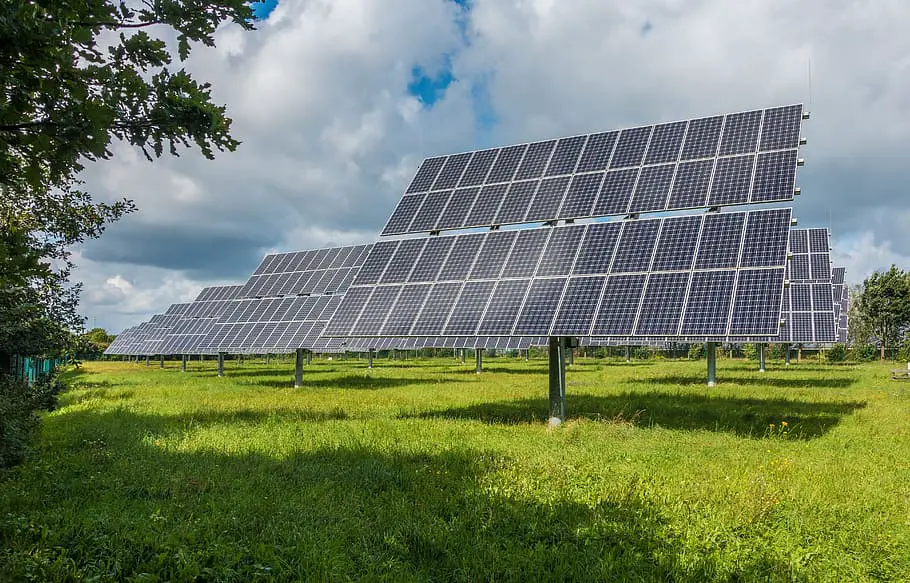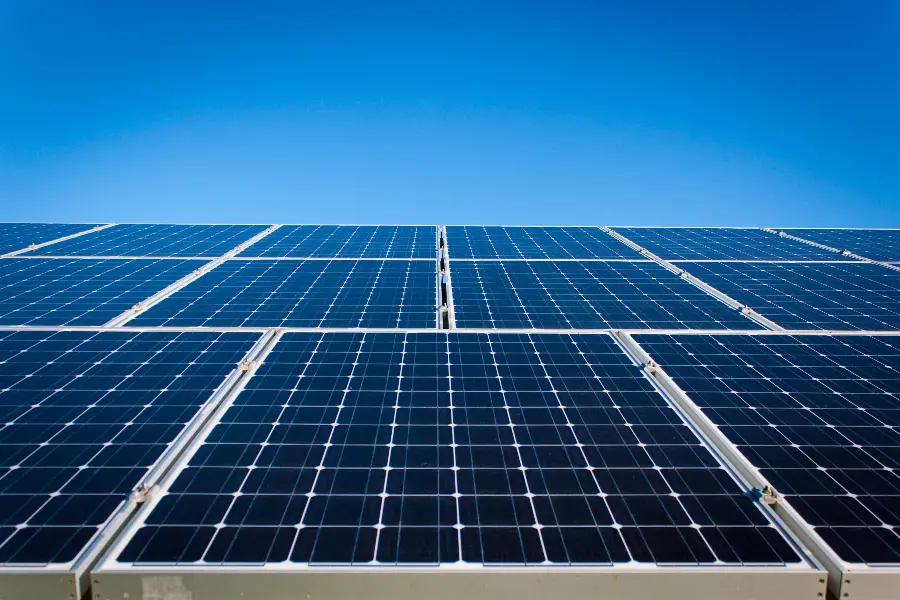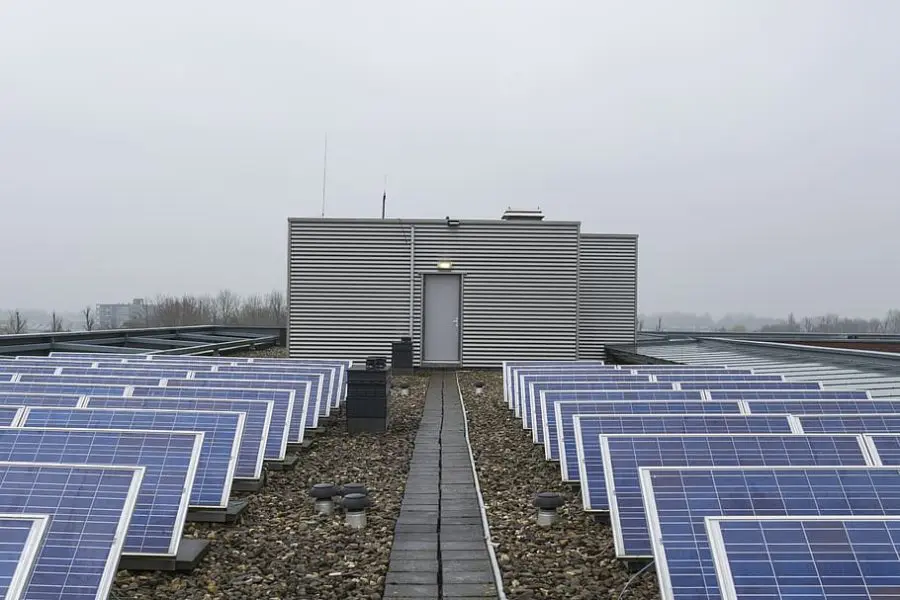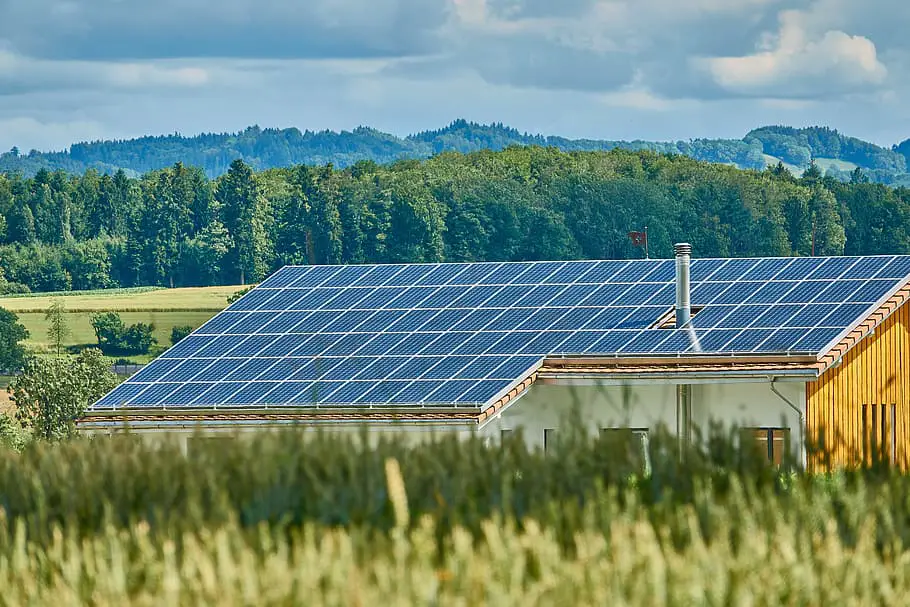
Explore the ins and outs of the environmental impact of solar energy production in our latest blog post. Discover the benefits, challenges, and future of solar power.
Ever stopped to ponder ‘the environmental impact of solar energy production’? It’s a topic that’s more than just a mouthful.
It’s a key to understanding our future. As we bask in the sun’s glow, we’re also harnessing its power, transforming rays into renewable energy.
But like all good things, sustainable energy sources come with their own set of challenges.
So, let’s dive in and shed some light on the environmental impacts, both good and not-so-good, of turning sunlight into electricity.
The Environmental Impact of Solar Energy Production
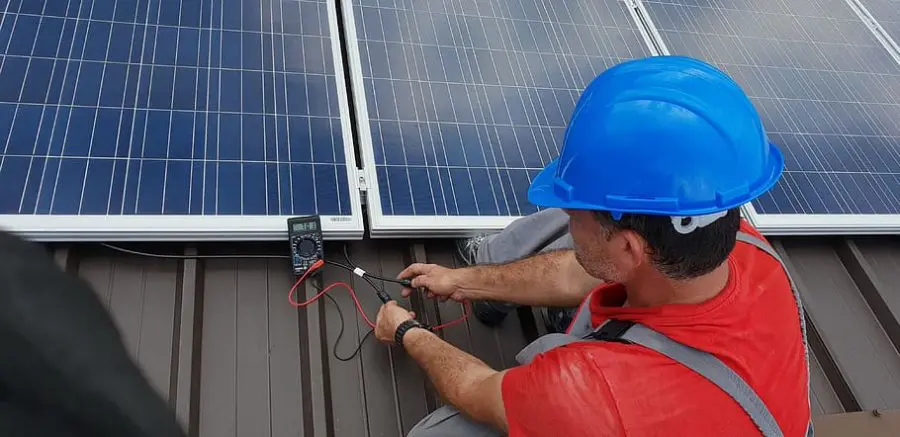
Welcome to our deep dive into the environmental impact of solar energy production.
This isn’t just about harnessing the sun’s power, it’s about understanding the whole picture.
We’ll be exploring the sunny side, like the environmental benefits of solar energy and how solar energy reduces greenhouse gas emissions and contributes to climate change mitigation.
But we’ll also venture into the shadows, discussing the environmental implications of solar panel manufacturing and solar farms.
From the lifecycle of solar panels to the strategies for mitigating environmental impact, we’ve got it all covered.
Brief Overview of Solar Energy
Let’s start at the beginning, shall we? Solar energy is like that friend who’s always there when you need them.
In this case, providing us with a constant and consistent source of power. It’s all about capturing the sun’s rays and converting them into electricity.
This is done through photovoltaic solar cells (those shiny panels you see on rooftops) or through concentrating solar thermal plants.
It’s clean energy and a renewable source of energy that’s been gaining popularity worldwide over traditional energy sources.
And the best part? It’s free! Well, once you’ve got your solar panels installed, that is.
Importance of Studying the Environmental Impact of Solar Energy Production
Now, you might be thinking, Solar energy is clean and renewable, so it’s all good, right? Well, it’s not that simple.
While solar energy has a lot of positives, it’s crucial to study its environmental impact.
This includes everything from the manufacturing process of the solar panels to their disposal at the end of their life.
It’s like buying a new car. You wouldn’t just consider the cost of the vehicle itself, but also the fuel, maintenance, and eventual resale value.
Similarly, understanding the environmental impact of solar energy production helps us make informed decisions and develop strategies to minimize any negative effects.
After all, our ultimate goal is to protect our beautiful planet, isn’t it?
The Benefits of Solar Energy
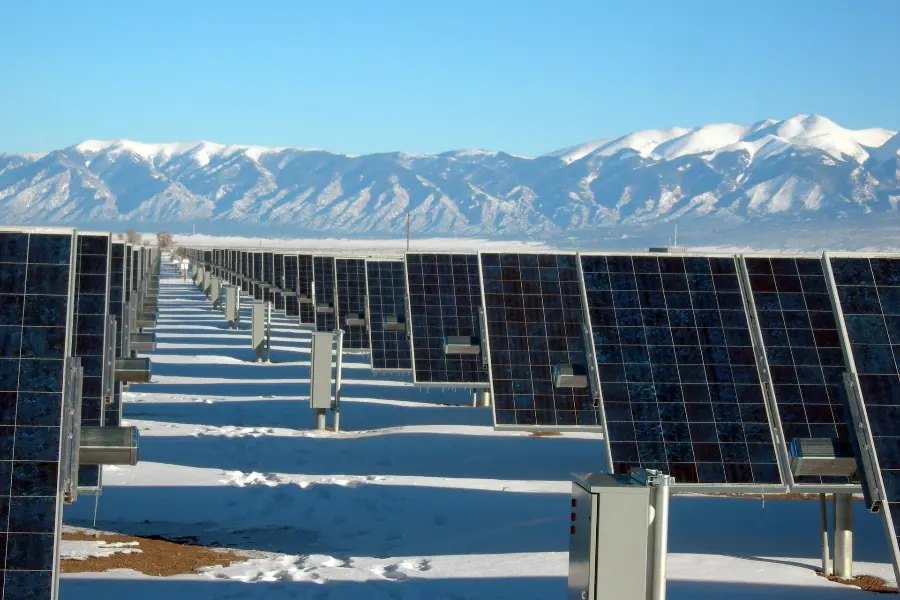
Alright, let’s shift gears and bask in the sunny side of things. Yes, we’re talking about the benefits of solar energy.
It’s like that superhero movie where the hero swoops in to save the day, except in this case, the hero is the sun, and the day being saved is, well, every day.
From reducing greenhouse gases to offering energy independence, solar energy has a lot to bring to the table.
So, let’s dive in and explore these benefits, shall we?
Reduction in Greenhouse Gas Emissions
First up on our list of solar energy’s superpowers is its ability to reduce greenhouse gas emissions.
Picture this: every time we use fossil fuels for electricity, it’s like sending an invitation to unwanted guests like carbon dioxide and other greenhouse gases.
These guests don’t know when to leave, and they end up causing a ruckus in our atmosphere with their carbon emissions.
But with solar energy, it’s a different story. It’s like having a party where the only guest is clean, renewable energy sources.
No unwanted greenhouse gases, no large carbon footprint and no problem!
Mitigation of Climate Change
Next up, we have climate change mitigation. Now, we’ve all heard about climate change. It’s like that big, scary monster hiding under the bed.
But guess what? Solar energy is like the night light that keeps the monster at bay.
By reducing greenhouse gas emissions, we’re also reducing the effects of climate change.
It’s a win-win situation. So, the more we use solar energy, the more we can help keep our planet healthy and happy.
Energy Independence and Security
Last but not least, let’s talk about energy independence and security.
Imagine not having to rely on imported fossil fuels like oil, natural gas, and coal for your energy needs. Sounds great, right?
That’s exactly what solar energy offers. It’s like growing your own vegetables in your backyard. You know where it’s coming from, and you don’t have to depend on anyone else.
Plus, with solar energy, we’re using a resource that’s abundant and, more importantly, renewable.
It’s like the sun is giving us a big thumbs up, saying, Go ahead, I’ve got plenty to share!
The Environmental Impact of Solar Panel Manufacturing
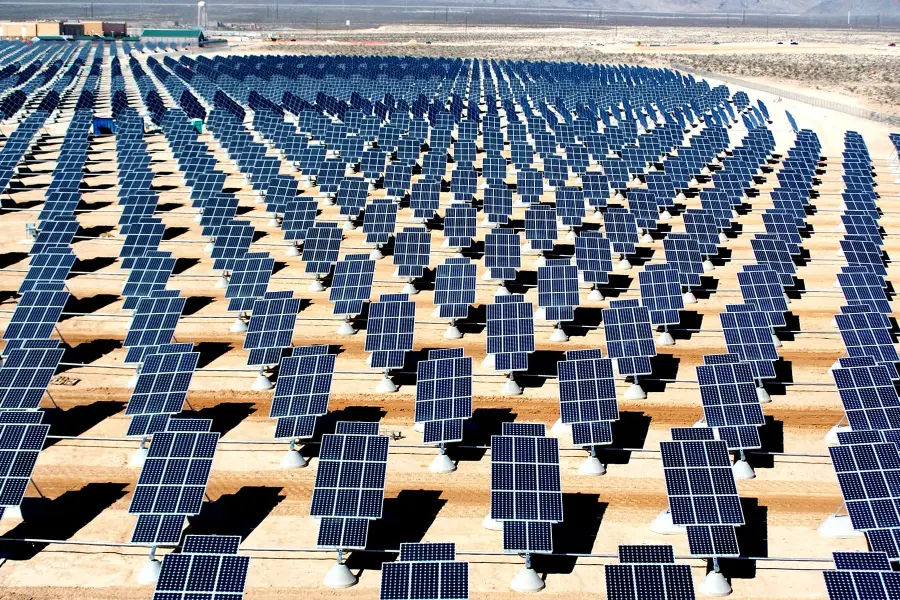
Now, let’s take a step back and look at how the magic happens. Yes, we’re talking about solar panel manufacturing.
It’s like baking a cake. You’ve got your ingredients (in this case, materials like silicon, metal, and glass), your recipe (the manufacturing process), and your finished product (the solar panel).
But just like baking, it’s not always a piece of cake. There are some environmental considerations to keep in mind.
So, let’s roll up our sleeves and delve into the environmental impact of solar panel manufacturing, shall we?
Energy and Resource Consumption in Manufacturing
Let’s start with the energy and resources that go into manufacturing solar panels.
It’s a bit like making a fancy dinner from scratch. You need a variety of ingredients and a fair amount of energy.
In the case of solar panels, these ‘ingredients’ include materials like silicon, metal, and glass.
The process to extract and refine these materials can be energy-intensive and can have a negative impact.
Plus, there’s the energy used in the manufacturing process itself.
But here’s the good news: once the solar panels are up and running, they start to pay back that energy debt by producing clean, renewable energy.
Use of Hazardous Materials
Next, let’s talk about the elephant in the room and the use of hazardous materials in solar panel manufacturing.
It’s like finding out your favorite chocolate bar has some ingredients that aren’t so great.
Some of the materials used to make solar panels, like cadmium and lead, can be harmful if not handled properly.
But don’t worry, the solar industry is well aware of these issues and is constantly working on ways to reduce the use of these materials and handle them safely.
Challenges and Solutions in Solar Panel Recycling
Recycling solar panels is an essential part of their lifecycle management, but it’s not without its challenges.
One of the main issues is the presence of hazardous chemicals in solar panels.
For instance, hydrofluoric acid is often used in the process of manufacturing solar panels and can pose risks if not handled properly.
Other potentially toxic chemicals can also be found in certain types of panels.
However, with the right safety measures and disposal methods, these risks can be managed.
The recycling process itself aims to recover valuable materials from the panels while safely dealing with any hazardous substances.
As technology and recycling practices continue to improve, we can look forward to even safer and more efficient ways to recycle solar panels in the future.
Waste Generation and Disposal
Finally, we come to waste generation and disposal. Just like after a big meal, there’s always some cleaning up to do.
When solar panels reach the end of their life, they can’t just be tossed in the bin.
They need to be recycled or disposed of properly to avoid causing environmental harm.
The good news is that many parts of a solar panel can be recycled, and there are growing efforts to improve solar panel recycling processes.
It’s all part of making sure that the solar energy journey is as green as possible from start to finish.
The Environmental Impact of Solar Farms
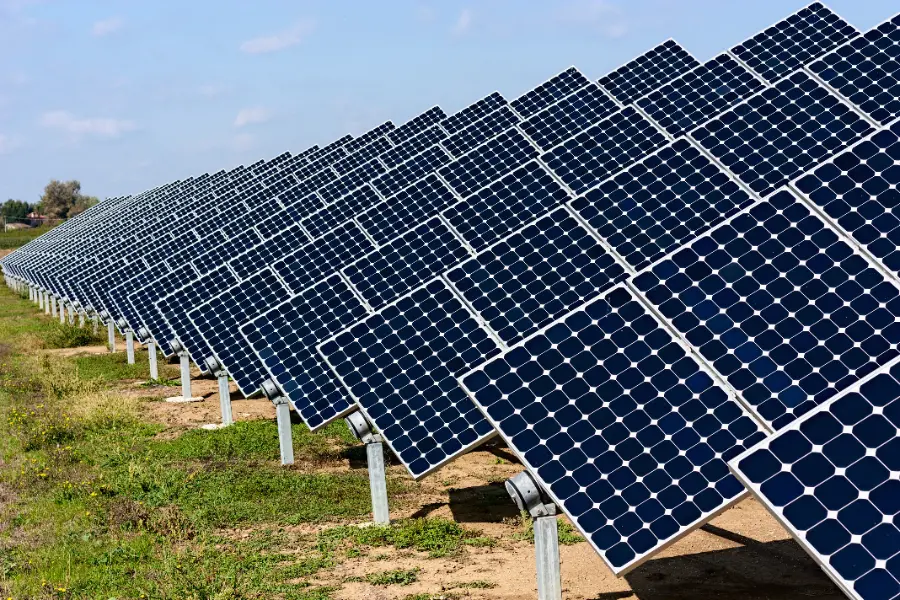
Picture this: vast fields shimmering with the reflective glory of solar panels, harnessing the power of the sun.
These are large-scale solar farms, and they’re a key player in our renewable energy future.
But just like any farm, they have an impact on the land they occupy. From land use to water consumption, and even the local wildlife, there’s a lot to consider.
So, let’s take a stroll through these solar fields and uncover the environmental impact of solar farms, shall we?
Land Use and Habitat Loss
First up, let’s talk about land use and habitat loss. Imagine setting up a picnic in a park.
You’d need a fair amount of space, right? Now, imagine that the picnic is a solar farm, and the park is a piece of land.
Solar farms, especially large-scale ones, require a lot of space. This can lead to habitat loss for local wildlife, especially if the land was previously undeveloped.
But here’s the silver lining: solar farms can be set up on already disturbed lands, like abandoned industrial sites, minimizing their impact on natural habitats.
Water Use
Next on our list is water use. Now, you might be thinking, Wait, solar panels need water?
Well, not the panels themselves, but the process of keeping them clean and efficient does.
Just like how a car runs better when it’s clean, solar panels perform better when they’re free of dust and debris.
However, the amount of water used is typically much less than that used by traditional power plants.
Plus, many solar farms are exploring innovative ways to clean panels that use little to no water.
Impact on Local Wildlife and Ecosystems
Lastly, let’s discuss the impact on local wildlife and ecosystems. It’s like throwing a big party.
There’s always a chance the neighbors might not be thrilled. Similarly, the construction and operation of solar farms, and this also applies to harnessing wind energy with the installation of wind turbines can potentially disrupt local wildlife and their habitats.
However, with careful planning and management, these environmental issues can be minimized.
For instance, some solar farms are designed to allow wildlife to move freely around and between the panels.
It’s all about finding a balance between our energy needs and the needs of our furry, feathered, and scaly friends.
The Lifecycle Analysis of Solar Panels
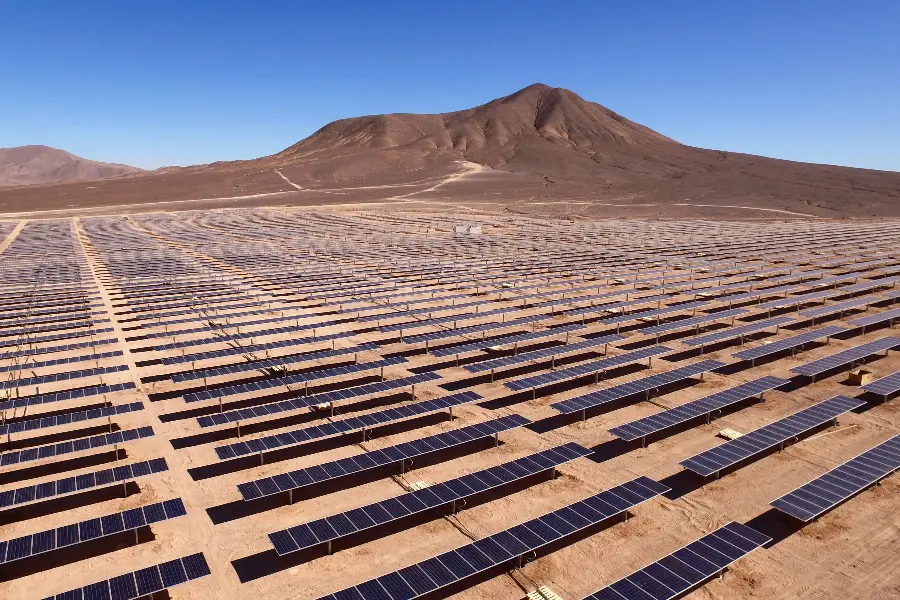
Have you ever wondered about the journey of a solar panel?
From its humble beginnings as raw materials to its shining moment on a rooftop, and finally to its retirement, every solar panel has a story to tell.
This is what we call the lifecycle of a solar panel. But like any good story, it’s not without its twists and turns.
So, let’s turn the page and delve into the lifecycle analysis of solar panels, exploring everything from energy payback time to end-of-life management. Ready? Let’s dive in!
Energy Payback Time
Let’s kick things off with energy payback time. Think of it like a savings account.
You put in an initial deposit (the energy to manufacture the panel), and over time, you start to see returns (the energy produced by the panel).
The energy payback time is the time it takes for a solar panel to produce the same amount of energy that was used to create it.
Now, this might sound like a long time, but it’s actually not.
Most solar panels pay back their energy debt within a few years, and after that, it’s all profit in the form of clean, renewable energy.
End-of-Life Management and Recycling
Now, let’s talk about what happens when a solar panel reaches the end of its life.
It’s a bit like retiring an old car. You wouldn’t just leave it in the middle of the road, would you?
Similarly, solar panels need to be properly managed and recycled at the end of their life.
This involves safely recovering the valuable materials inside the panels and disposing of any solar panel waste.
The good news is that many parts of a solar panel can be recycled, and there are growing efforts to improve solar panel recycling processes.
It’s all part of ensuring that solar energy remains a sustainable solution for our energy needs.
Mitigation Strategies and Best Practices
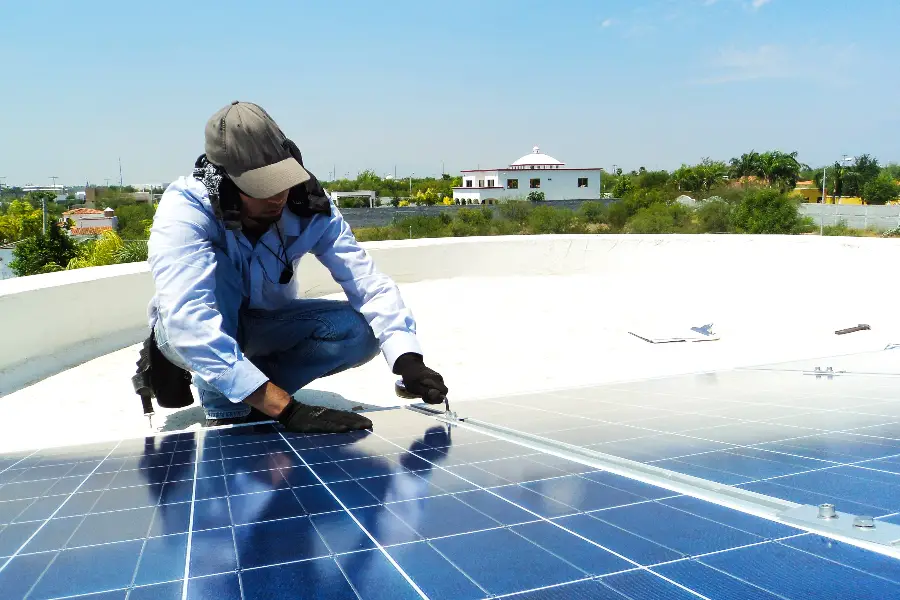
Alright, we’ve talked about the environmental impacts of solar energy, but what about the solutions?
It’s like when you’re faced with a challenge, you don’t just throw in the towel, right? You come up with strategies to overcome it.
The same goes for solar energy. From sustainable manufacturing practices to responsible siting and wildlife-friendly design, there are plenty of ways to mitigate the environmental impact of solar energy.
So, let’s roll up our sleeves and explore these mitigation strategies and best practices, shall we?
Sustainable Manufacturing Practices
First up, let’s talk about sustainable manufacturing practices. It’s like choosing to bake with organic ingredients. It’s a small change that can make a big difference.
In the case of solar panels, this could mean using less energy-intensive processes, reducing waste, or even using more environmentally friendly materials.
Many solar panel manufacturers are already taking steps in this direction, constantly innovating and improving their processes to make them as green as possible.
Responsible Siting and Wildlife-Friendly Design
Next, let’s discuss responsible siting and wildlife-friendly design.
Imagine setting up a picnic in a park. You’d want to choose a spot that’s not going to disturb the local wildlife, right?
The same principle applies to setting up solar farms.
This could mean choosing sites that are already disturbed, like abandoned industrial sites, or designing the solar farm in a way that minimizes impact on local wildlife.
It’s all about coexisting with nature, rather than competing with it.
Solar Panel Recycling and Waste Management
Finally, we come to solar panel recycling and waste management. Think of it like recycling your pop cans. It’s a simple act that can have a big impact.
When a solar panel reaches the end of its life, it’s important that it’s disposed of properly.
This means safely recovering the valuable materials inside the panel and properly disposing of any waste.
The good news is that many parts of a solar panel can be recycled, and the industry is constantly working on improving recycling processes.
It’s all part of making sure that solar energy is a truly sustainable solution.
Environmental Impact of Solar Energy FAQs
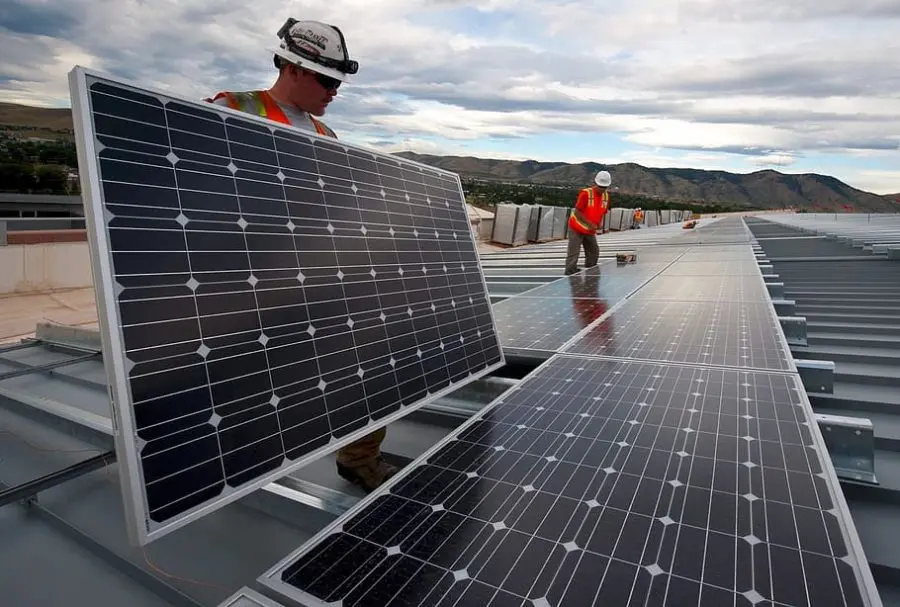
Alright, we’ve covered a lot of ground, but you might still have some burning questions about the environmental impact of solar energy.
Asking questions is how we learn and grow. So, we’ve gathered some of the most frequently asked questions about solar energy and its environmental impact.
Let’s dive in and quench that thirst for knowledge, shall we?
Q: What are the environmental impacts of solar energy?
A: Solar energy has several environmental impacts. On the positive side, it helps reduce greenhouse gas emissions and mitigates climate change.
However, it also has some negative impacts, such as the use of hazardous materials in solar panel manufacturing, potential habitat loss due to the construction of solar farms, and the need for proper waste management at the end of a panel’s life.
Q: What is the environmental impact of production and use of solar energy?
A: The production of solar energy involves the manufacturing of solar panels, which can consume significant energy and resources and involve hazardous materials.
The use of solar energy, on the other hand, is quite clean, producing no direct emissions or waste.
However, maintenance of solar panels and solar farms can have some environmental impact, such as water use for cleaning panels.
Q: What are 3 environmental impacts of solar energy?
A: Three environmental impacts of solar energy include:
1) Reduction in greenhouse gas emissions, which helps combat climate change.
2) Potential land use and habitat loss due to the construction of large-scale solar farms.
3) The use of hazardous materials in the manufacturing process of solar panels, which needs to be carefully managed to prevent harm to the environment.
Q: What is the greatest environmental impact from solar energy systems?
A: The greatest environmental impact from solar energy systems can vary depending on the specific context.
However, one significant concern is the potential for habitat loss and land use changes due to the construction of large-scale solar farms.
This can be mitigated through careful site selection and design.
The use of hazardous materials in solar panel manufacturing is another significant impact, emphasizing the need for safe handling and disposal practices.
Environmental Impact of Solar Energy Production Conclusion
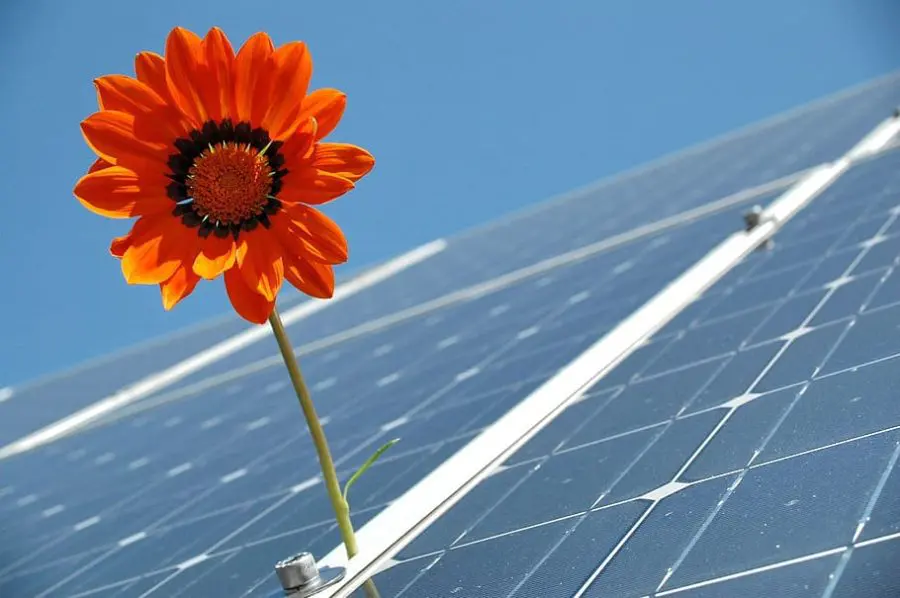
Well, we’ve certainly been on quite a journey, haven’t we? From understanding the basics of solar energy to diving deep into its environmental impacts, we’ve covered a lot of ground.
But as with all good things, it’s time to wrap up our exploration. So, let’s take a moment to reflect on what we’ve learned and look ahead to the future of solar energy and its environmental impact.
Ready for the grand finale? Let’s go!
Summary of Key Points
So, what have we learned? First, we’ve seen that solar energy, while a fantastic source of renewable energy, does come with its own set of environmental considerations.
We’ve explored how the manufacturing of solar panels involves energy and resource consumption, as well as the use of hazardous materials.
We’ve also discussed the impact of solar farms on land use, water consumption, and local ecosystems.
But it’s not all challenges. We’ve also highlighted the many benefits of solar energy, from reducing greenhouse gas emissions to offering energy independence.
And let’s not forget the various strategies we can employ to mitigate these impacts, like sustainable manufacturing practices and responsible siting.
The Future of Solar Energy and its Environmental Impact
Looking ahead, the future of solar energy is bright (pun intended). As technology continues to advance, we can expect to see improvements in the efficiency and environmental footprint of solar systems.
Innovations in manufacturing processes may reduce energy consumption and waste, while advances in recycling could make end-of-life management more sustainable.
And as we continue to learn and adapt, we’ll find better ways to balance our energy needs with the health of our planet.
So, here’s to a future powered by the sun, where clean, renewable energy is the norm, not the exception! Read more about Solar Energy for Homes and Businesses.
Read more about the Impacts of Solar Power



